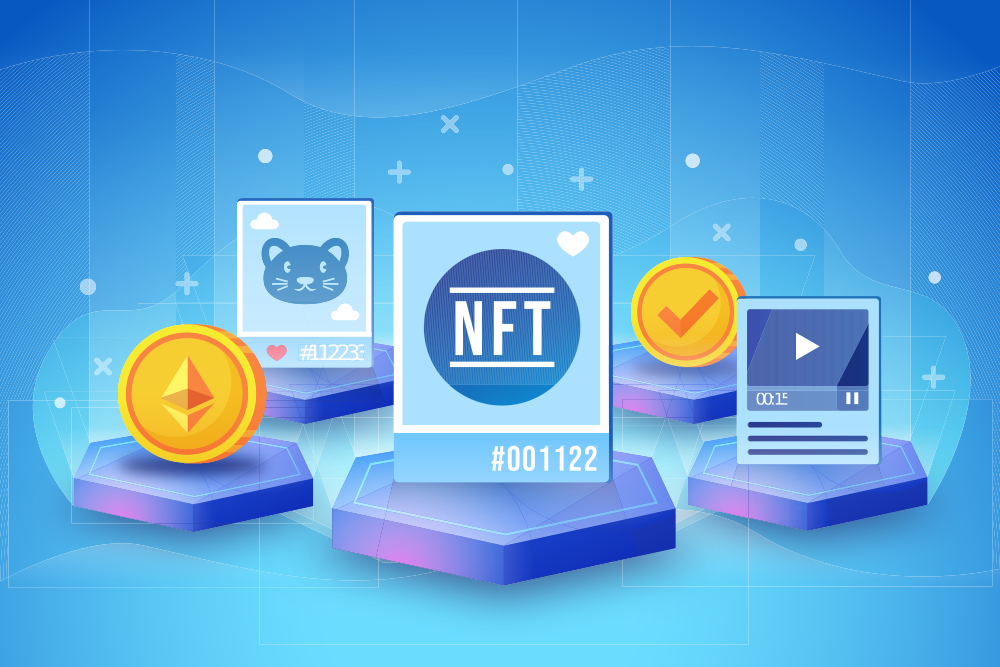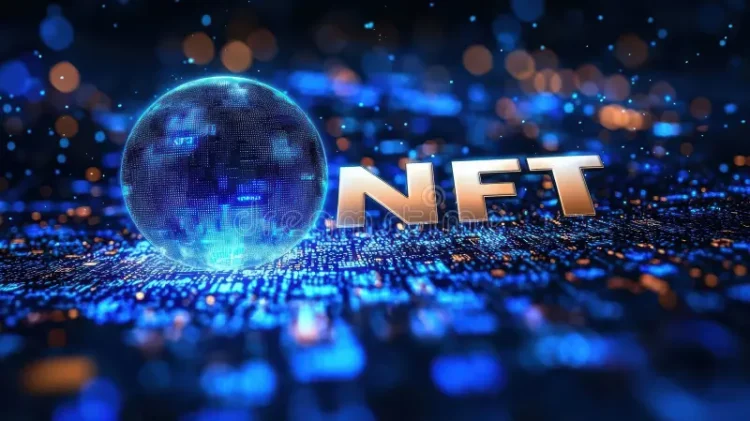Introduction
The world of Non-Fungible Tokens (NFTs) is still in its infancy, yet its potential is already stirring up significant changes in various sectors, from digital art to gaming, and even virtual real estate. What started as a niche market for digital art enthusiasts has now evolved into a global phenomenon that is reshaping industries, enabling new forms of ownership, and creating a future where digital and physical realms converge in unprecedented ways. NFTs represent unique, verifiable digital assets stored on the blockchain, making them essential for the modern age of ownership in a world increasingly driven by digital content.
NFTs are already revolutionizing how we think about creativity, ownership, and investment, but their future is filled with endless possibilities. As we stand at the cutting edge of this digital revolution, it is worth considering the exciting breakthroughs and unforeseen surprises that NFTs might bring in the coming years. From virtual worlds to new financial paradigms, NFTs have the potential to touch virtually every corner of our digital and physical lives, opening doors to untapped value, opportunities, and experiences.
In this article, we will explore the infinite potential of NFTs, the technological innovations driving their evolution, and how they are poised to disrupt traditional industries. We’ll dive into their current and future applications, challenges, and examine the implications for creators, investors, and everyday users.
NFTs: A Gateway to New Realities
What Makes NFTs Unique?
At the heart of the NFT revolution lies the concept of digital uniqueness. Unlike cryptocurrencies such as Bitcoin or Ethereum, which are fungible and interchangeable, each NFT is unique and cannot be replicated. This uniqueness is achieved through blockchain technology, ensuring that the NFT can’t be copied, tampered with, or counterfeited. Blockchain offers transparency and traceability, confirming ownership history and preventing fraud.
For creators, the NFT is more than just a new way to monetize their work; it is a new means of establishing authenticity and verifiable ownership over their creations in the digital world. Whether it’s art, music, videos, or even virtual real estate, NFTs offer a way for digital creations to hold intrinsic value, just like physical assets.
The Current NFT Landscape
Today, NFTs are having a major impact across a range of sectors:
- Digital Art: NFT platforms like OpenSea and Rarible allow artists to mint and sell their digital art as NFTs, ensuring their works cannot be stolen or duplicated. NFT art is not only gaining recognition in the art community but also in mainstream markets, with high-profile auctions generating millions of dollars.
- Gaming: NFT-based gaming ecosystems like Axie Infinity have revolutionized the way players interact with virtual assets. In these games, users can own, trade, and profit from in-game items and characters as NFTs. This allows for true ownership and the ability to trade assets across different platforms, creating an entirely new economy within gaming.
- Virtual Real Estate: Platforms like Decentraland and The Sandbox allow users to buy and sell virtual land represented as NFTs. As virtual worlds continue to expand, NFTs will become the foundation for owning and trading virtual property, creating digital metaverses where people can interact, socialize, and do business.
- Music and Media: Musicians and content creators are using NFTs as a way to directly monetize their work without intermediaries. For example, musicians can mint NFTs to represent ownership of their albums or exclusive tracks, allowing fans to own a piece of their work.
While these areas are the current hotbeds of NFT activity, the full potential of NFTs remains largely unexplored.
The Infinite Potential of NFTs
The Metaverse and Virtual Reality
One of the most significant developments in the world of NFTs is their role in the Metaverse—an interconnected network of virtual worlds where people can socialize, work, play, and own digital assets. As the Metaverse expands, NFTs will play an integral role in facilitating ownership and exchanges within virtual environments.
In the Metaverse, NFTs will enable users to own virtual assets, such as land, clothing, art, and even experiences. These NFTs can be used across various virtual platforms, creating a truly interoperable, decentralized economy. Users can purchase, sell, and trade their assets across the Metaverse, creating a world where virtual ownership is as significant as physical ownership.
This integration of NFTs into the Metaverse also opens up new opportunities for businesses and creators to engage with audiences in innovative ways. Companies will likely begin to sponsor events, host virtual stores, and create NFT-based experiences for their customers.
Fractional Ownership: Democratizing Access to High-Value Assets
One of the most exciting developments in the NFT space is the concept of fractional ownership. Currently, purchasing an NFT usually means buying the entire digital asset. However, in the future, NFTs could be fractionalized, allowing multiple individuals to own a portion of a high-value asset, such as a rare piece of digital art or even virtual land in the Metaverse.
This democratization of ownership could radically change how wealth and assets are distributed. Fractionalization lowers the barrier to entry for investing in valuable digital assets, making it possible for more people to participate in markets that were previously restricted to the wealthy. Imagine owning a fraction of a Picasso NFT or a property in a popular virtual world.
This innovation could spark an explosion of participation in the NFT market, as users gain access to high-value assets that were once out of reach.
NFTs and Intellectual Property (IP) Rights
NFTs can be used as a tool for licensing intellectual property (IP). For example, musicians, film directors, and content creators can mint NFTs to represent ownership of their work, including licensing rights. This would allow creators to directly control and monetize their intellectual property, removing the need for intermediaries like record labels or film studios.
This also opens up new possibilities for licensing agreements where NFTs could act as smart contracts, ensuring that both creators and consumers are protected. For example, an artist could sell an NFT that gives the buyer access to a limited number of digital copies of a song, with the NFT encoding the terms of the sale directly in its smart contract.
By using NFTs as IP management tools, creators can maintain control over how their work is used and ensure they receive fair compensation.
NFTs in Real-World Assets and Supply Chain
NFTs are already being used to tokenize physical assets, and this trend is likely to continue growing. For example, real estate, luxury goods, and even agricultural products could be tokenized as NFTs to facilitate more transparent and efficient transactions.
By linking real-world assets with NFTs, individuals can buy, sell, and trade physical property in a way that is transparent and secure. NFTs can also be used to track the provenance of products, ensuring that goods like luxury watches, jewelry, and art can be verified as authentic.
NFTs could also play a critical role in improving supply chain transparency, enabling consumers to track the origin and history of products from production to sale.

Challenges to Overcome for NFT’s Future Growth
Scalability Issues
As the demand for NFTs increases, the scalability of blockchain networks will become a significant concern. Currently, platforms like Ethereum, which host the majority of NFTs, are facing issues such as high gas fees and network congestion. The introduction of Layer 2 solutions and newer blockchains such as Solana or Polygon are beginning to address these concerns, but further innovation will be required for NFTs to truly scale.
Environmental Impact
The environmental impact of NFTs is another concern, particularly those minted on networks like Ethereum, which uses a Proof-of-Work (PoW) consensus mechanism. The high energy consumption of PoW mining has led to criticism of the NFT space, especially when it comes to sustainability. However, the transition to Proof-of-Stake (PoS) with Ethereum 2.0 promises to address these issues by reducing energy consumption.
Legal and Regulatory Challenges
NFTs raise a host of legal and regulatory issues that will need to be addressed in the coming years. Intellectual property rights, taxation, and fraud prevention are some of the primary concerns that governments and regulatory bodies will need to consider. As the NFT space continues to evolve, we can expect to see clearer legal frameworks that help protect both creators and consumers.
User Experience and Education
NFTs can be complex, and the user experience is a barrier to entry for many potential users. Wallets, gas fees, and marketplaces can be intimidating for those unfamiliar with blockchain technology. As the industry matures, simplifying the user experience and offering better educational resources will be critical in onboarding new users and ensuring broad adoption.
Conclusion
The future of NFTs is boundless, with the potential to revolutionize how we interact with digital and physical assets. From fractional ownership and intellectual property management to the Metaverse and real-world tokenization, NFTs are set to play an integral role in shaping the next generation of the digital economy. As the technology matures, the possibilities for NFTs seem endless, offering new opportunities for creators, investors, and users alike.
While challenges such as scalability, environmental impact, and regulatory concerns remain, the NFT space is moving rapidly toward solutions. With continued innovation and development, NFTs will undoubtedly bring unexpected breakthroughs that transform industries,redefine ownership, and change the way we engage with digital content in the future.
We are on the cusp of a digital revolution, and NFTs are leading the charge. The future is bright, and the possibilities are truly infinite.

















































